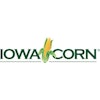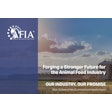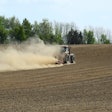
A new quarterly report from CoBank's Knowledge Exchange warns of an impending labor shortage that could impact U.S. businesses and economic growth as early as later this year. The report highlights a combination of factors contributing to the squeeze on labor supply, including declining labor force participation, lower birth rates, and a significant drop in net migration.
Rob Fox, director of CoBank's Knowledge Exchange, emphasized the urgency of the situation, stating, "Barring an unforeseen change in labor force participation rates or immigration policies, the pool of available workers is set to shrink precipitously in the next few years."
The report outlines several key factors contributing to the labor crunch:
Labor force participation has been trending downward since 2000, with nearly 2.5 million working-aged people leaving the workforce in the past eight months alone.
The U.S. fertility rate has plummeted since the 2008 financial crisis, reducing the number of native-born citizens entering the workforce.
More restrictive immigration policies and aggressive deportation efforts have further limited the labor supply.
The impact of these trends is expected to be particularly acute in states with lower population growth, such as those in the Upper Midwest, Corn Belt, and Central Plains.
To address these challenges, the report suggests that businesses, especially those operating in rural America, should increase their focus on technology adoption. Fox noted, "Increased adoption of technology, namely AI and robotics, will likely be at the core of any strategy to address the oncoming labor squeeze."
The report also touches on other economic factors affecting the U.S., including:
- Rising housing costs, which have contributed to historically low consumer sentiment
- A 60% increase in the monthly cost of homeownership between 2021 and 2024
- A 16% drop in new single-family housing starts over the last three months
In the agricultural sector, the report highlights mixed conditions across various commodities. Favorable growing conditions are pressuring corn prices, while beef cattle prices remain at record highs. The dairy sector is seeing growth in herd size and milk production, particularly in states with new processing assets.
The report also notes challenges in the cotton industry, with expectations for the second smallest U.S. crop in 10 years, and ongoing pressures in the sugar market due to softening demand.
















